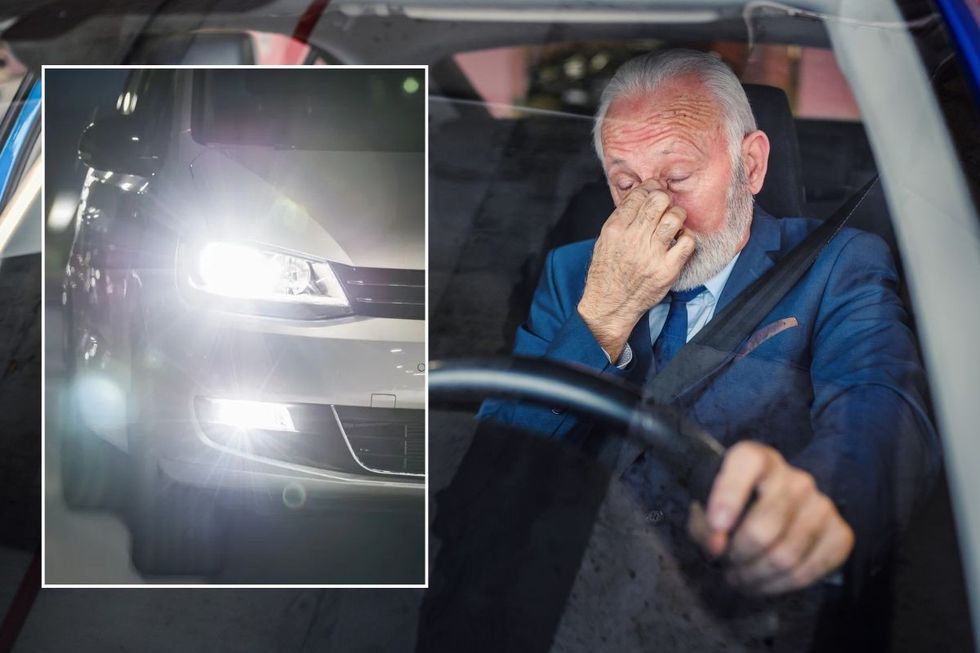Driving law changes gain support as motorists risk 'vision impairment' from bright LED headlights
'For older drivers or those with existing eye conditions, the effects [of LED headlights] can be even worse'
Don't Miss
Most Read
Trending on GB News
Bright LED headlights continue to be one of the biggest issues for motorists as they navigate roads amid calls for law changes to boost road safety.
New data has found that almost three in five motorists (57 per cent) believe LED headlights are too bright and would deem them a cause for concern.
A further 25 per cent of people said that overly bright headlights impair their vision when driving, especially early in the morning or late at night.
Road safety experts and the driving population have highlighted bright LED headlights as a serious issue for a number of years, given how common they are on newer vehicles.
Do you have a story you'd like to share? Get in touch by emailingmotoring@gbnews.uk

Research has found that elderly drivers are more impacted by bright LED headlights than younger people
GETTY
The intense white light from LED headlights is often compared to traditional yellow halogen bulbs, which are considered to be less harsh for other drivers.
Experts have also suggested that the rise in popularity of SUVs and other larger vehicles has contributed to more drivers being dazzled by the bright LED lights.
Since the vehicles are higher off the road, the direction of the light can cause issues for motorists in lower cars, as the beam could be aiming directly at other drivers' line of sight.
While LED lights are more efficient and improve the visibility of the driver, Britons continue to complain about the impact on their safety when travelling.
Dr Deborah Lee, from the Dr Fox online pharmacy, said: "Sudden exposure to bright headlights can cause temporary vision impairment, eye strain, headaches and even slower reaction times.
"For older drivers or those with existing eye conditions, the effects can be even worse. In short, the intensity of LED headlights can create what's called an intraocular straylight, which blurs vision and makes it hard for eyes to focus.
"This can be especially dangerous when driving at night, as it can make it harder to see hazards on the road."
Data from LKQ Euro Car Parts found that 28 per cent of Britons would support new legislation to regulate LED headlights, with some even calling for them to be banned entirely.
Last year, the Department for Transport launched practical trials alongside the Transport Research Laboratory (TRL) to understand more about the causes of glare.
The project, which began in October 2024, will use vehicles to measure light levels experienced by drivers and how factors can impact the intensity, including weather conditions and ambient lighting.
It is believed that the report will generate "actionable recommendations" for the DfT to take forward in international working groups and potentially inform future policy.
Older motorists said they were impacted by bright headlights the most prominently, with 36 per cent of those over 65 saying they had vision issues from LEDs, compared to just 15 per cent for those aged between 18 and 24.
LATEST DEVELOPMENTS:

More vehicles are being fitted with LED headlights rather than 'traditional' halogen bulbs
PAA spokesperson for LKQ Euro Car Parts called on drivers to maintain their vehicles to minimise the impact of bright headlights. Dirty windows and mirrors can worsen the glare from oncoming vehicles by scattering the light as it hits the surface.
The expert added: "Changes in vision, particularly as we age, can make us more sensitive to glare.
"Having regular eye tests to ensure your prescription is up to date is an important safety precaution for driving, and can also help detect conditions like cataracts, which can increase glare sensitivity."









